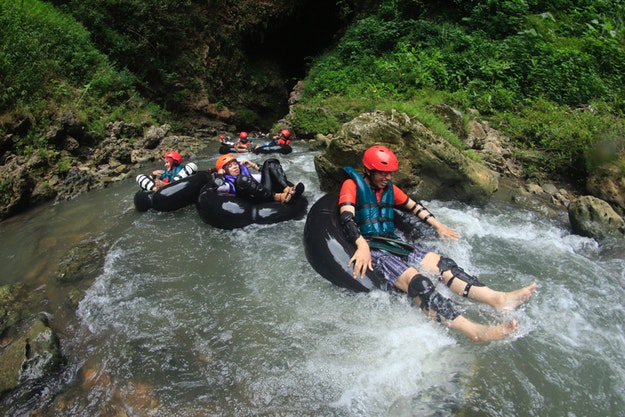So you say you want to try white water rafting but you’ve never done it before.
Maybe a friend came back from Colorado raving about how much fun they had doing it. Maybe you were looking at Grand Rapids houses for sale and heard about Michigan’s river restoration project. Maybe you just saw a tourist brochure while visiting Yosemite National Park.
Whatever the reason, you got bitten by the bug. Here are some helpful tips that can help white water newbies bite back:
Pick the right river
All white water rapids are rated on a scale of one to six based on how difficult and dangerous they are. Factors that affect a river’s rating include how wide and how deep it is, how fast it moves, and if there are any obstacles rafters will have to maneuver around. Class, I rivers are generally mild enough that you can ride an inner tube along with them if you want, while Class VI rivers are for experts only and pose a legitimate life-or-death risk. First-timers will likely want to start with a Class II or III river, which is largely safe while still offering a fun challenge.
Listen to your guide
Unless you’re sticking with a Class I river, you’ll want to hire a guide to come with you, especially if it’s your first time. Rafting guides are seasoned experts, so trust their knowledge and listen to what they tell you. Paddle how and when they tell you, and stop when they tell you to stop. If your guide tells you not to do something, know that they’re only doing it to keep you safe and make sure you have a good time.
Dress for success
It should come as no surprise that, while white water rafting, you’re going to get wet. What may be a surprise is just how cold that water can be, even in the middle of summer. Dress in light non-cotton garments that won’t absorb too much water, but also items that will cover your extremities and keep you warm. Consider wearing a wetsuit underneath your normal clothes for an extra layer of protection. Finally, bring a pair of sunglasses and put on sunscreen, even if it doesn’t seem like a particularly bright day. Weather can change in an instant and it’s best to be prepared.
Safety comes first
Again, listen to what your guide tells you at all times. Keep your helmet and life jacket on at all times, and try to keep from falling into the river. If you do, don’t get scared. Your life jacket will help you keep your head above water. Stay calm and try to stay close to the raft. It can be difficult getting back in, so try not to flail and just let your compatriots pull you back inside. Finally, it should go without saying, but if you have difficulty swimming, you probably shouldn’t go white water rafting.
Work up a sweat
White water rafting is a lot of fun, but It’s also a lot of work. In fact, you may be surprised just how much exercise it provides. Properly controlling your raft means paddling, paddling, and more paddling. Your guide will show you the right way to paddle, which means sticking your oars deep in the water and pushing hard against the currents. By the end of your first run, your arms will probably be a little sore. While you don’t have to be an athlete to do this, you should be in good enough health that a fast-beating heart won’t be a problem.











